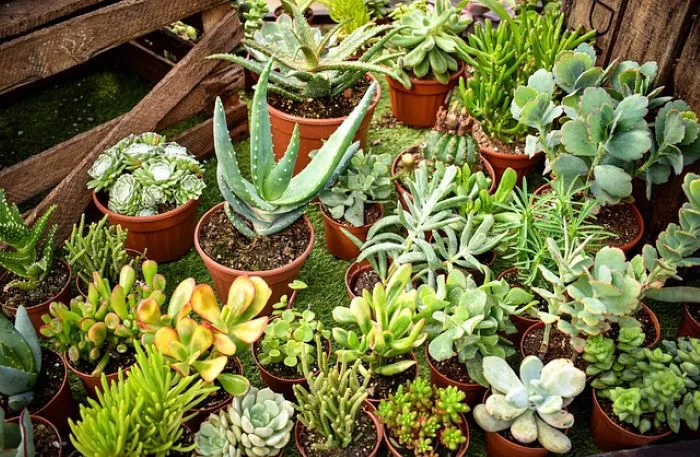The Donkey Tail succulent, scientifically known as Sedum morganianum, is a popular choice among succulent enthusiasts. This trailing succulent is loved for its unique appearance, featuring long, cascading stems covered in plump, blue-green leaves. Its charming, whimsical look makes it an excellent addition to hanging baskets or as a decorative element in a succulent arrangement. Proper care is essential to ensure that your Donkey Tail thrives and maintains its beauty. This article will provide a comprehensive guide on how to care for a Donkey Tail succulent.
Understanding the Donkey Tail Succulent
Donkey Tail is native to Mexico and is part of the Crassulaceae family. It is a perennial succulent that can grow up to 2 feet long. The leaves are fleshy, oval-shaped, and have a waxy surface, which helps retain moisture. The plant produces small, pink, star-shaped flowers in the summer, adding to its appeal. However, the flowers are not the main attraction; the cascading leaves are what make this succulent truly special.
Choosing the Right Location
Light is one of the most critical factors for the health of a Donkey Tail succulent. This plant thrives in bright, indirect sunlight. Direct sunlight can scorch its leaves, causing them to turn brown or become crispy. If growing indoors, place the plant near a south or west-facing window where it can receive ample light without being exposed to harsh rays. If you notice the stems stretching or becoming leggy, it may be a sign that the plant needs more light.
When growing Donkey Tail outdoors, choose a location that receives filtered sunlight or partial shade. Too much direct sun can damage the leaves, while too little light can hinder growth.
Soil Requirements
Donkey Tail succulents require well-draining soil to prevent root rot. A commercial cactus or succulent mix is ideal, as it is formulated to provide excellent drainage. If you prefer to create your own mix, combine regular potting soil with perlite or sand in a 2:1 ratio. This mixture will help ensure that excess water drains away quickly, keeping the roots healthy.
When repotting your Donkey Tail, choose a pot with drainage holes. This will further enhance drainage and prevent water from accumulating at the bottom of the pot.
Watering Practices
Watering is crucial for the health of a Donkey Tail succulent. These plants are drought-tolerant and prefer to dry out between waterings. Overwatering is one of the most common mistakes made with succulents and can lead to root rot.
To determine when to water, check the soil moisture. Insert your finger about an inch into the soil. If it feels dry, it is time to water. When watering, do so thoroughly until water drains from the bottom of the pot. Ensure that excess water does not sit in the saucer, as this can lead to root rot.
During the growing season, which typically occurs in spring and summer, you may need to water more frequently. In fall and winter, reduce watering as the plant enters a dormant period. During this time, the Donkey Tail requires less moisture.
Fertilizing the Donkey Tail
Fertilizing is not strictly necessary for Donkey Tail succulents, but it can promote healthy growth. If you choose to fertilize, use a diluted, balanced fertilizer designed for succulents. Apply the fertilizer once a month during the growing season. Avoid fertilizing during the dormant season in fall and winter, as the plant does not require additional nutrients during this time.
Pruning and Propagation
Pruning is essential for maintaining the shape and health of your Donkey Tail succulent. Remove any dead or yellowing leaves to prevent disease and encourage new growth. If the plant becomes too leggy, you can trim back the stems to promote bushier growth.
Propagation is relatively easy with Donkey Tail succulents. The plant produces offsets, or “pups,” that can be removed and planted in their own pots. To propagate, gently remove the offsets from the main plant and allow them to dry for a day or two. Once the cut ends have calloused over, plant them in well-draining soil and water lightly. Keep the new plants in a bright, indirect light location until they establish roots.
Common Pests and Problems
While Donkey Tail succulents are relatively low-maintenance, they can be susceptible to certain pests and problems. Common pests include mealybugs, aphids, and spider mites. Regularly inspect your plant for signs of infestation. If you notice pests, treat the plant with insecticidal soap or neem oil. Ensure good air circulation around the plant to help prevent pest issues.
Another issue to watch for is overwatering. Signs of overwatering include yellowing leaves, mushy stems, and a foul smell from the soil. If you suspect overwatering, reduce your watering frequency and allow the plant to dry out completely. In severe cases, you may need to repot the plant in fresh, dry soil.
Conclusion
Caring for a Donkey Tail succulent can be a rewarding experience. With its unique appearance and low maintenance needs, this plant is perfect for both beginners and experienced gardeners. By providing the right light, soil, and watering practices, you can ensure that your Donkey Tail thrives and remains a beautiful addition to your home or garden. Regular pruning and attention to common pests will help maintain its health and beauty. With proper care, your Donkey Tail succulent can flourish for many years, bringing joy and charm to your space.


